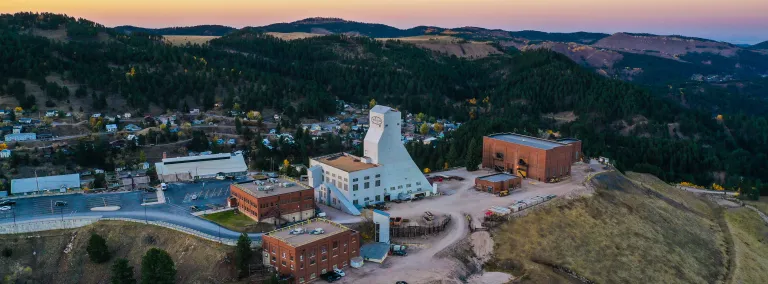SURF Activities Impact SD Economy
Op Ed: Study reveals significant impacts, especially in Western South Dakota, from 2020 through 2029
Until its closure in 2002, the former Homestake Gold Mine was the largest and deepest in the western hemisphere. Following the closure, Barrick Gold Corporation continued to dewater the mine as negotiations to develop a deep underground research facility proceeded. As progress slowed, Barrick was forced to turn off the pumps. Still, there was hope. Scientists continued to seek a way to make the facility a reality—a venture that would require a big investment—and a big risk. But then-Governor Mike Rounds was determined to bring a world-leading research laboratory to South Dakota. In 2006, Rounds and the South Dakota Legislature took a bold step, appropriating $45.5 million dollars toward the project. That initial investment helped secure $70 million from philanthropist T. Denny Sanford and the Sanford Underground Research Facility (SURF) was born.
Today, SURF hosts world-leading research in physics, biology, geology and engineering and is home to the international Long-Baseline Neutrino Facility and Deep Underground Neutrino Experiment (LBNF/DUNE). The largest science project attempted on U.S. soil, LBNF/DUNE includes a collaboration of more than 1,300 scientists from 32 countries.
The South Dakota Science and Technology Authority (SDSTA) recently commissioned an economic impact study to better understand how all activities at SURF impact the region. The study revealed significant impacts, especially in Western South Dakota, from 2020 through 2029.
- SURF’s net economic impact is projected to reach $1.6 billion. This number takes into account construction of the LBNF/DUNE project, which is managed by the Department of Energy’s Fermilab and SURF operations.
- Household earnings for South Dakotans expected to reach $572 million.
- The study also showed that 1,052 jobs could be created annually.
SURF employs nearly 200 people and has spent more than $250 million on salaries, construction, supplies and materials since 2007 in South Dakota. And Fermilab and its subcontractors employs approximately 160 people annually through construction of LBNF/DUNE. Construction on the project is expected to take up to 10 years and will operate for at least 20 years, bringing in hundreds of scientists every year and securing the future of SURF—and regional jobs—for years to come.
In addition to economic benefits, we’re advancing K-12 education by leveraging the world-leading research at SURF. Education specialists develop curriculum units, classroom presentations and field trips—all designed that meet South Dakota science standard—and create numerous teacher professional development opportunities. SURF’s K-12 outreach has touched the lives of more than 60,000 students and 1,400 educators in South Dakota.
We know that undergraduate and graduate students need real-world experiences. Every year, we create workforce opportunities, hiring students from South Dakota universities to work as interns at SURF in a variety of disciplines. Interns work with experts in science, engineering, environmental health, safety, communications and education, which prepares them for exciting careers.
The future looks very bright for SURF. We are grateful for the vision, leadership and support we have received from the State of South Dakota over the years and proud to give back to the people in our communities and throughout the state.
